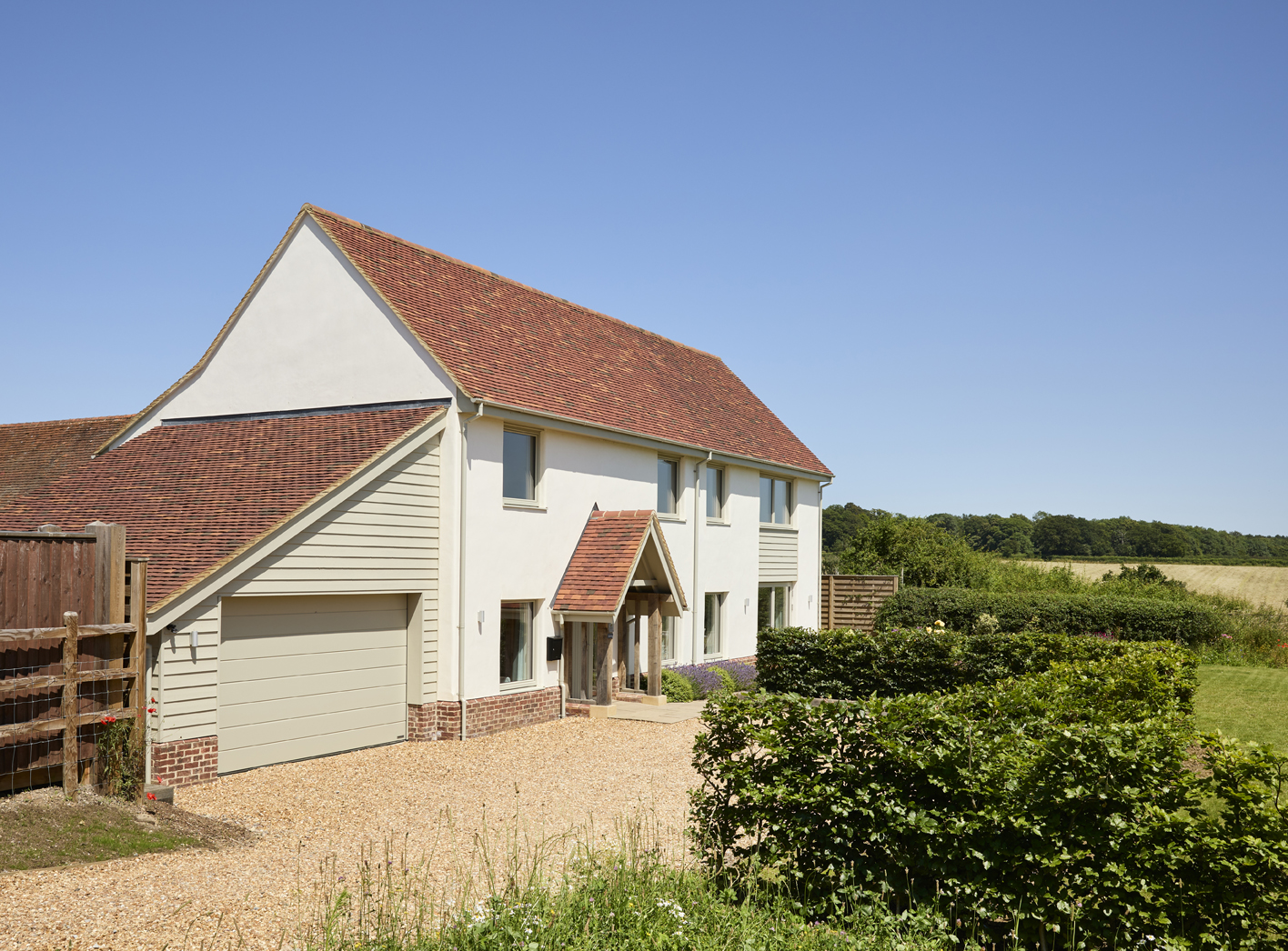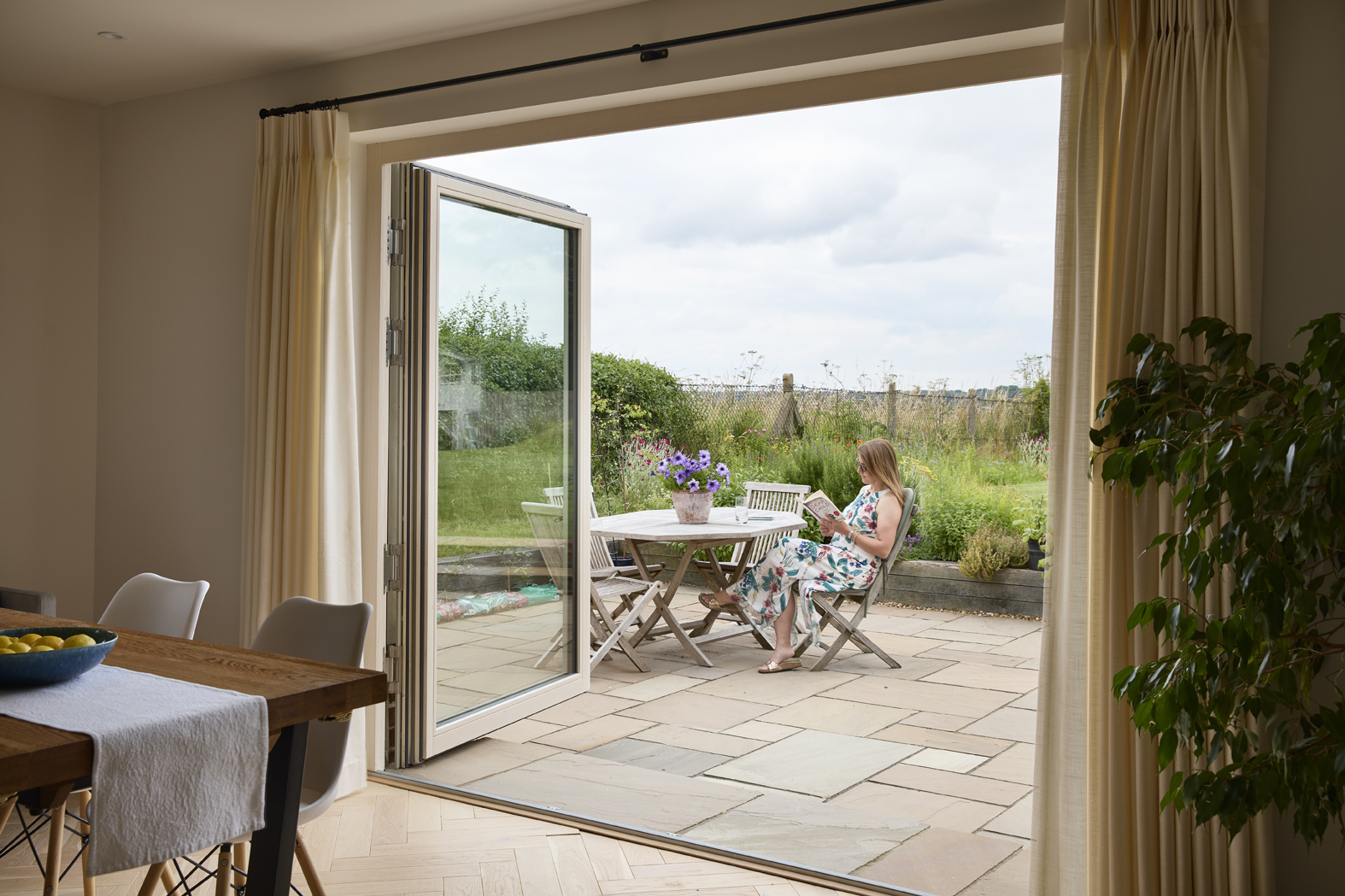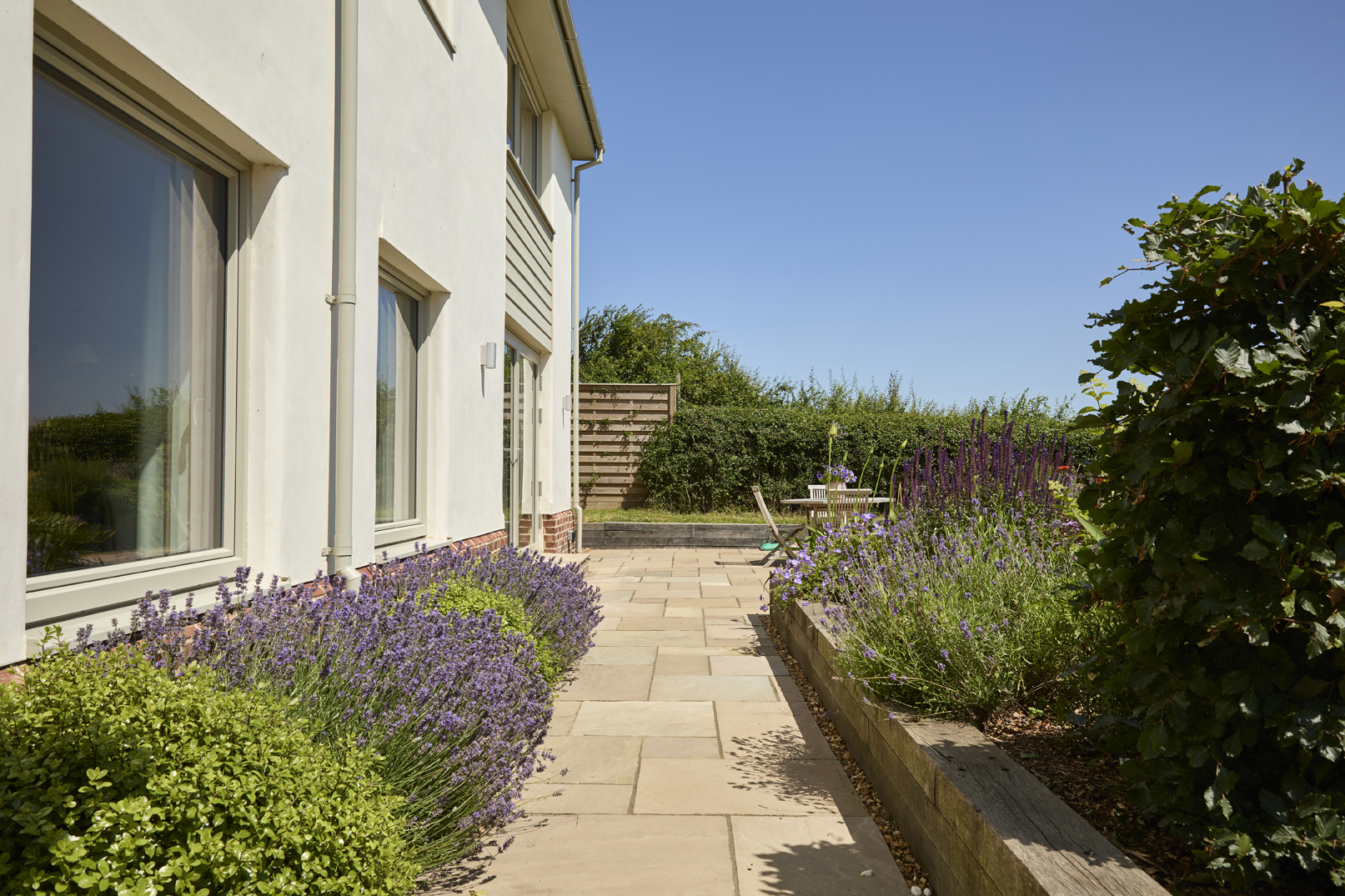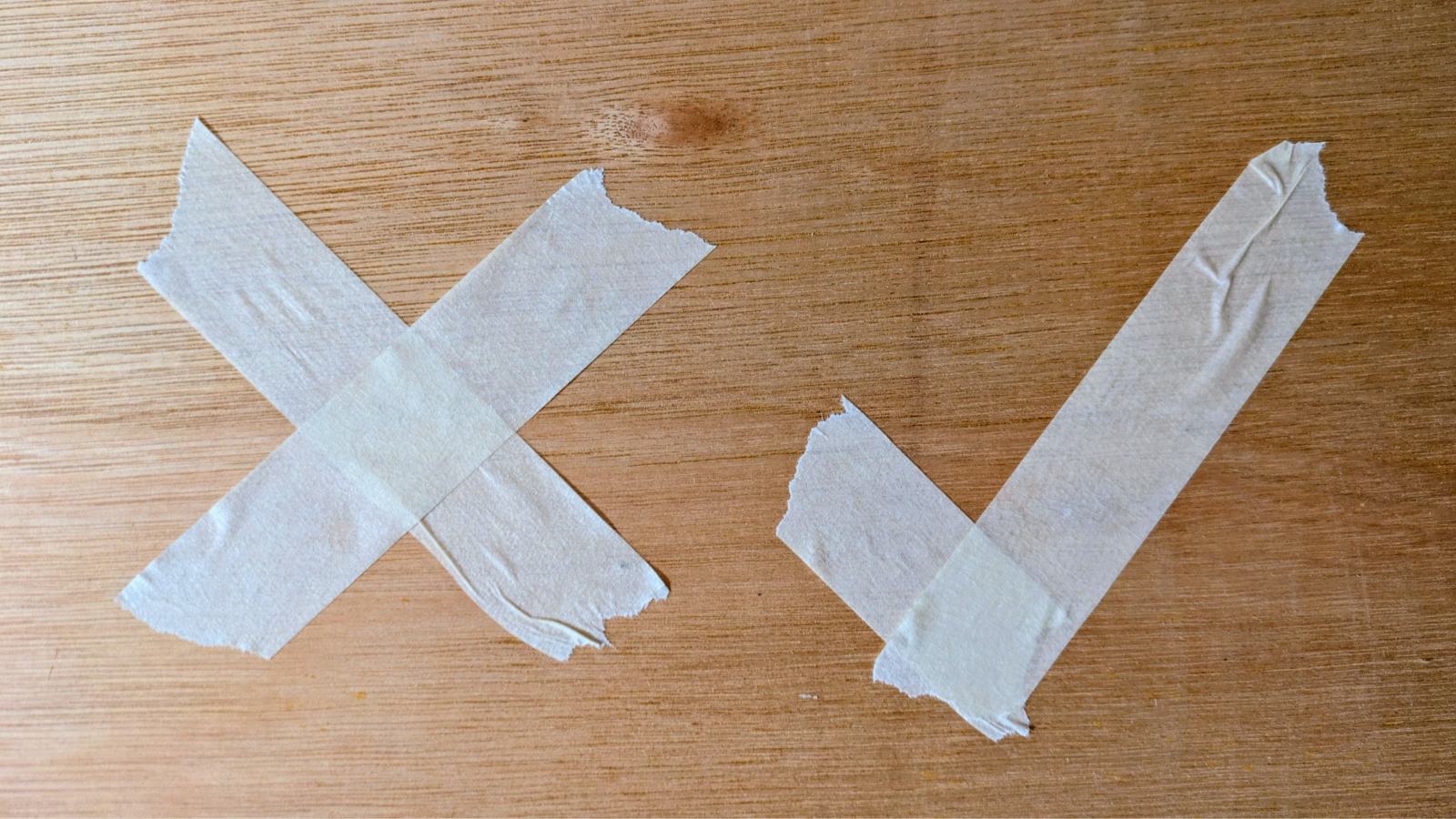5 Things to Know About Living in a Passivhaus (From Someone Who Built One)
What to know what it's like to live in a Passivhaus? Ben Adam-Smith breaks downs the benefits he's discovered and the issues he's encountered of his own Passivhaus certified build

Living in a Passivhaus isn't quite the same as living in an ordinary home. It comes with certain modifications to how you live that need to be adopted into your everyday behaviour in order for your build to function optimally. Some describe it as the idea that you need to learn to 'drive' a Passivhaus.
This is something that Ben Adam-Smith, founder of House Planning Help, a resource site and podcast helping those seeking to build their own homes, has discovered first hand after building his own Passivhaus with his wife Kay several years ago.
Here, Ben explains his 5 key takeaways from his experience of Passivhaus living so far.
The Passivhaus Boasts Have All Come True
There are massive acoustic benefits — we’ve slept through helicopters landing outside and thunderstorms, and only found out about them through neighbours!
When you’re learning about building a Passivhaus home, there are some pretty lofty claims. I’m pleased to report that, in my experience, they have all materialised.
Topping that list is the level of comfort you will enjoy. You may already understand the temperature aspect of building to Passivhaus standards, that the interior temperature will be 20°C or above all year, but maybe not how even the temperature is throughout the house. There are no cold surfaces (below 17°C) and there are no draughts. This is perhaps most noticeable at the windows, where in a traditionally built house the window panes can be cold in winter and air can infiltrate easily.
(MORE: Eco Homes)
There’s something else that you quickly forget — mould and condensation. If you do see condensation it’s on the outside of your windows. Your house is full of fresh air and it’s completely changed every couple of hours. This also means that smells don’t linger. Even one of my stinkiest fry-ups will be history, perhaps not immediately, but in a few hours.
Bring your dream home to life with expert advice, how to guides and design inspiration. Sign up for our newsletter and get two free tickets to a Homebuilding & Renovating Show near you.

And it’s not only air that gets extracted through the mechanical ventilation system but moisture. If you encompass a laundry space in your new home there’s a good chance you’ll never hang clothes outside again.
There are massive acoustic benefits too. We’ve slept through helicopters landing outside and thunderstorms, and only found out about them through neighbours and friends. And then there are the heating bills, which are significantly less. In the depths of winter there’s nothing that makes more sense than feeling your radiators haven’t switched on because it’s a sunny day.
I attribute all these benefits to having a certified Passivhaus. I think you have to be really careful if you’re not certifying that you are getting the same thing.
You're Going to Play an Active Role in Keeping Your Home Cool in Summer
Passivhaus comfort comes into its own in winter. There will be nothing to do and on some days, if you don’t get out for a while, you may not even realise that it’s cold outside.
However, in summer it’s a different story. Your job is to prevent your home overheating. If your house has been responsibly designed then your overheating risk will already have been minimised. The Passive House Institute defines overheating as going above 25°C and this must not exceed 10% of the year (36 days).
On my own project I have a 0% chance of overheating, but there’s a catch. I have to cool down my house at the end of the day. So if it reaches 25°C in a day, I have to bring it down to 21°C before the sun comes out the next day.
You see a Passivhaus is designed to get warmer. So on a typical day my house might climb 3°C, even with careful consideration of the window sizes and shading (like roof overhangs) built into the design.
My house has all this, but if I get lazy with cooling it then I will pay the penalty. So how do I cool down the house and its thermal mass? 99% of the time, it’s a simple case of opening my windows and doors at the beginning or end of the day, and waiting for the temperature to drop. I live in the countryside where security is not really a massive issue but I can imagine this could be an interesting strategy in central London.

There is one scenario where my cooling efforts become more of a challenge: the ‘35°C’ heatwave. Not only is there maximum sunshine during these times, but the night time temperature gets higher and higher. With an overnight low of 19°C or 20°C, cooling the house becomes harder and slower.
On the first day of the heatwave, I might only get my house back to 21°C. Then the next day I might only manage 22°C. If the muggy nights continue we’ll be up to 23°C by day three. At this point, my house does start to overheat. And that’s with me keeping windows open on tilt all night, and getting up around 6am to open everything fully and make sure I don’t miss my cooling opportunity.
In reality we are still way cooler than a typical house (yet another benefit — summer comfort) and all the humid air is taken out, making it feel cooler, but I think by engaging in temporary external shading (sails over key window or manual shutters) we could prevent the house from warming up as much. I’d love to experiment more with this.
I’d avoid ‘defaulting’ to electric louvres because they use extra energy, can be misused as curtains and if they go ever go wrong you will boil in a bag!
Maintaining Your MVHR is Important
There's no emergency call out for MVHR like a plumber or locksmith, but you could argue that breathing is quite important...
Once you have built a Passivhaus there are only two things you need to do.Prevent overheating, as we've already covered, and maintain the Mechanical Ventilation with Heat Recovery (MVHR) system.
The filters are easy enough to change; however, you may be a little nervous the first time, but if you follow the instructions on the ‘MVHR wizard’, in two minutes you’re done. It costs me about £100 a year for my filters but they are essential to the efficiency of the machine.
When to change them is an interesting question? Typically they say every 3-4 months but I’m going to experiment with leaving them in for longer and changing them when they look like they need changing or every 6 months, whichever is sooner. The ongoing cost is a bit of a pain but far more annoying to me is that these filters need to be binned. I believe there are reasons why they are made the way they are but this means they are destined for landfill.
In terms of reliability I’ve had a few run-ins with my MVHR. The good news is that the fans have never stopped working but the error messages have been a pain to investigate. Consulting with the manufacturer is often slow and if the fans did break there is no emergency call-out, as you might have with a plumber or a locksmith. Yet you could argue that breathing is quite important.
And then it comes down to the actual maintenance of the kit. I have not done all the things the manufacturer suggests and this is mainly because I’m busy, I don’t trust myself with the job and I can’t find someone to do the maintenance for me at a reasonable price. Trust is another issue. I’ve got a lot of trust with the company I bought through but they do not have a maintenance service at present.
So when it comes down to maintenance, one way or another I’m going to need to try somebody for the three year service or expect more problems of my own making.
You may be Nervous About Making Alterations to Your Home
Once you’re living in a Passivhaus you probably want to stay living in a Passivhaus. Of course, looking after any building from time-to-time you need to carry out repairs and make changes. I don’t know whether I’m slightly paranoid but I feel like I need to defend the airtightness and wall build-up.
Under normal circumstances there will not be another airtightness test so if I do any work to the house I will not really know if it’s been done properly. I’ll give you a couple of examples:
- When we were cost cutting on our project we removed a second outdoor tap on the other side of our plot. We’ve decided that we could really do with this now, but because the water supply comes up inside the house it would mean drilling a hole through the wall as part of the process. I’m sure this can all be done well, but I don’t think it’s a job that’s going to interest my contractor much because it’s too small. And am I really going to trust a local handyman or builder with that work?
- We're also thinking of installing some blackout blinds of the main bedroom. This may be less of a challenge but it’s still a concern as the airtightness layer is the internal plaster.

It’s also worth noting that Passivhaus buildings don’t always stay Passivhaus buildings. If you extend or carry out significant structural work, you would need to go through the certification process again (and for good reason).
You'll Miss Out on All the Conversations About Switching on the Heating!
There’s a long tradition in the UK of rubbish summers. Even when we do get a good summer, we may be reluctant to pass into September. So invariably one of your friends will admit that they’ve switched on their heating as a way of gauging whether they are the first or last to do this.
When you live in a Passivhaus you will not bat an eyelid. Your house will be perfectly comfy when people are having these conversations and you won’t have noticed that the night time temperature is dropping. If the heating conversation does come, it will be in October or November.
On the positive side you might be more tempted to join in conversations and experiments with Passivhaus homeowners. In February, for example, I found myself joining in an experiment of switching off the heating for a week. During this time I had to record the temperatures in the morning and evening. To my surprise the house didn’t drop below 19°C and we had no complaints from the kids. This is where you begin to realize that when you’ve built a house this way there’s no looking back.
Ben Adam-Smith is a film-maker, communicator and eco-building enthusiast. After 15 years working in TV and radio, Ben changed channels to set up Regen Media — a business that uses cutting-edge new media tools to help green-minded construction firms build better communications. Ben also runs the website and podcast, House Planning Help, which is dedicated to inspiring self builders to build energy-efficient homes. He has recently completed his own Passivhaus self build.

